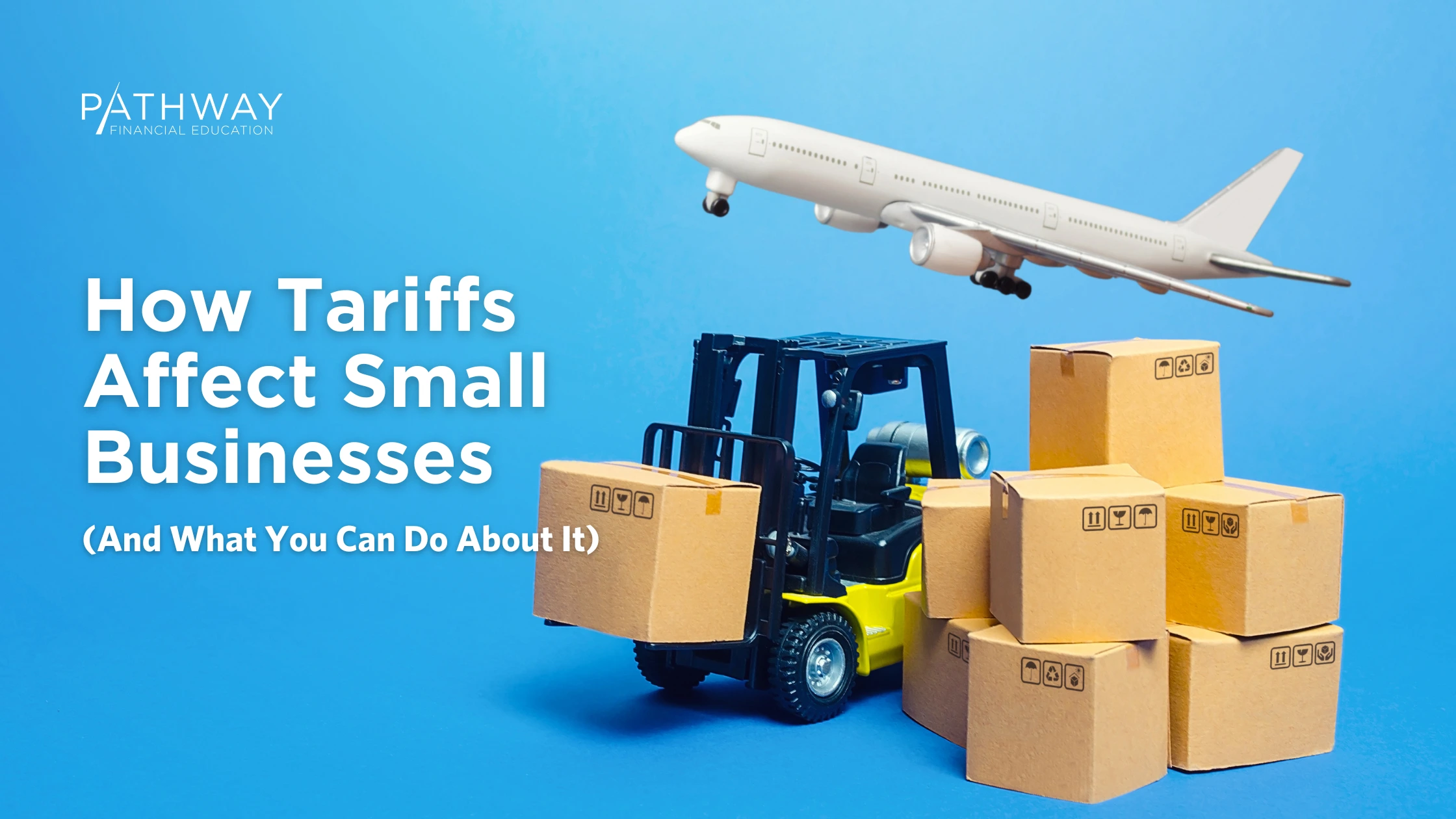
If you’ve been seeing more headlines about tariffs lately, you’re not alone. And yes, it’s something small business owners should be paying attention to.
In 2025, tariff talk is heating up again. The U.S. has raised import taxes on a wide range of goods from countries like China, Mexico, and Canada. Some Chinese imports were hit with rates as high as 145% earlier this year before a recent rollback brought many down to around 30%. On top of that, a blanket 10% tariff now applies to nearly all imported goods, with higher rates on specific items like steel, aluminum, and vehicles.
What does that mean for your business?
Even if you’re not directly importing products yourself, chances are your vendors, manufacturers, or suppliers are—and those increased costs tend to trickle down fast. Whether it’s the packaging you use, the materials you rely on, or the goods you resell, tariffs can sneak into your expenses in ways that aren’t always obvious.
And unlike big corporations, small businesses often don’t have the wiggle room to absorb those extra costs. It can mess with your margins, disrupt your supply chain, or force tough decisions about pricing or sourcing.
That’s why it’s worth understanding how tariffs work and how to protect your business from potential ripple effects.
What Exactly Are Tariffs, and How Do They Work?
Tariffs are basically taxes that a government places on goods coming into the country from abroad. Think of them as a fee charged at the border—paid by the importer—for bringing in products made elsewhere.
Here’s a simple breakdown:
-
Let’s say you run a small furniture business and order wood or finished pieces from overseas.
-
When those goods arrive in the U.S., the government charges a tariff (say, 10% of the value).
-
That extra cost gets added to what you pay—either directly or through your supplier—and that can push your expenses up quickly.
So while tariffs are designed to encourage buying American-made products, they can also raise prices throughout the supply chain, especially when alternatives are limited or more expensive.
Key points to know:
-
Tariffs are paid by U.S. importers, not foreign manufacturers. That means American businesses (like yours) usually absorb the cost first.
-
They vary by product and country. For example, clothing from one country may be tariff-free while electronics from another might face a 25% tariff.
-
They’re often used as political or economic tools. Tariffs can change quickly depending on trade negotiations or policy shifts, which makes long-term planning tricky.
If you’re sourcing materials, packaging, or goods internationally—or even just working with U.S.-based suppliers who do—tariffs may be affecting your bottom line more than you realize. Understanding how they’re applied is the first step in figuring out how to adapt.
How Tariffs Can Hit Your Small Business
You might be thinking, “I don’t import anything myself, do tariffs really affect me?” The answer is yes, and often in more ways than you’d expect.
Tariffs don’t just impact big importers or manufacturers. They create a ripple effect that works its way down the entire supply chain, and small businesses usually feel it faster and harder than larger ones.
Here’s how that might play out:
-
Higher supplier prices: If your suppliers rely on imported materials or goods, they may pass those extra costs on to you. For example, a local print shop might pay more for paper if tariffs drive up the price of imported pulp or packaging.
-
More expensive inventory: Retailers that sell imported products (or goods made with imported parts) may see their wholesale prices jump, forcing them to either raise prices or absorb the hit.
-
Shipping and delays: Tariffs can cause backups at ports, rerouting of goods, or changes in sourcing. That might mean longer lead times or unexpected surcharges.
-
Tight margins under pressure: If your profit margins are already slim (and let’s be honest—they often are), even a small increase in costs can be a big deal.
Let’s say you own a small kitchenware brand that uses imported stainless steel to manufacture your products. If a new tariff adds 20% to the cost of those materials, that change might eat into your profits, delay your timeline, or force you to hike prices, something customers might not love in today’s competitive market.
And here’s the kicker: many small business owners don’t realize tariffs are the culprit. They just know costs are up, timelines are off, and their cash flow feels tighter than usual.
How to Protect Your Business from Tariff Trouble
Tariffs can be unpredictable, but your response doesn’t have to be. Even if you can’t control trade policy, there are smart ways to prepare your business, cushion the impact, and stay flexible when costs shift.
Here are a few steps you can take:
1. Reevaluate Your Supply Chain
Now’s a good time to look under the hood of your sourcing.
-
Are you buying goods or materials that come from countries facing higher tariffs?
-
Can you find domestic alternatives, or source from countries with lower or no tariffs?
Even if it costs a little more upfront, reducing your exposure to volatile import pricing can stabilize your long-term expenses.
2. Talk to Your Suppliers
Open communication is key. Ask your vendors if they expect cost increases due to tariffs and what options might be available. Some may offer discounts for bulk purchases, alternative product lines, or early notice before price hikes.
3. Build a Buffer Into Your Budget
If your margins are tight, consider adjusting your pricing structure slightly to create room for rising costs. Even small increases across your product line or service fees can help offset unexpected expenses without alarming your customers.
4. Watch for Trade Policy Changes
Tariff rules can shift quickly, especially in election years or during global trade negotiations. Stay up to date by:
-
Subscribing to newsletters from the U.S. Chamber of Commerce or SBA
-
Setting Google Alerts for terms like “tariff changes” or “import tax updates”
-
Following trade-related sections in business news outlets
The more informed you are, the faster you can react.
5. Don’t Be Afraid to Ask for Help
If tariffs are starting to affect your operations, now might be the time to speak with a financial advisor, accountant, or local small business support organization (like Pathway!). They can help you:
-
Run cost analysis
-
Adjust your cash flow forecast
-
Explore possible tax deductions or relief programs
Tariffs may not be something you can avoid, but with the right strategies in place, you can minimize the surprises and stay in control.
Stay Ready, Not Reactive
Tariffs might seem like something only big corporations or politicians need to worry about—but as a small business owner, you know all too well how fast those “big picture” changes can trickle down to your day-to-day operations.
The good news? You don’t have to navigate it alone.
By understanding how tariffs work, paying attention to your supply chain, and building a plan that leaves room for change, you can stay one step ahead, no matter what the headlines say.
💬 Need help protecting your business from rising costs or supply chain surprises?
Pathway offers free financial workshops, one-on-one support, and resources designed with small business owners in mind. Let’s make sure you have the tools to grow, adapt, and thrive.
👉 Reach out to us or check out our upcoming events to get started.




